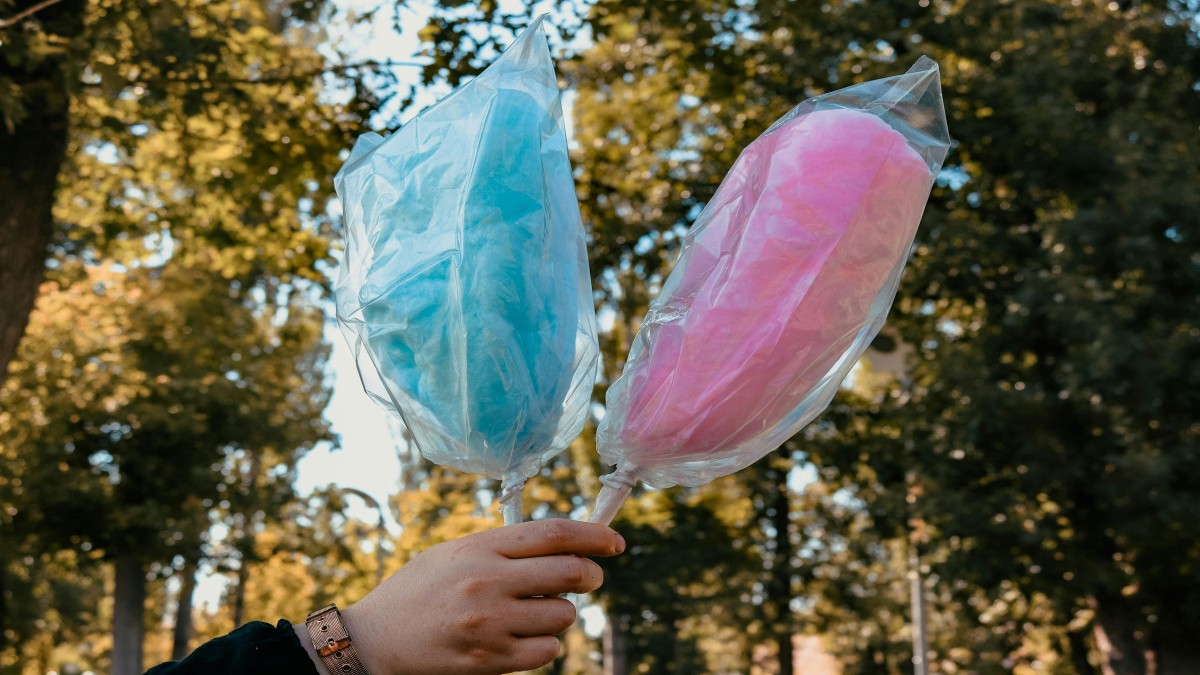All around the world, kids love cotton candy, often known as “buddi-ka-baal” (old woman’s hair) in India.
Due to its sticky, melt-in-your-mouth feel, it is a staple in amusement parks, fairs, and other kid-friendly entertainment venues.
However, there are fresh concerns that an artificial dye used to tint the sugary pink treat contains a carcinogen.
Some states have banned this popular kid’s treat, while others are getting ready to test it.
But does cotton candy really cause cancer? Let’s take a look.
The ban
Tamil Nadu announced last week that the candy could no longer be sold after it was proven to contain a chemical that causes cancer.
Rhodamine-B, a chemical substance used as an artificial colouring ingredient in the sweet item, was discovered through lab testing, according to a statement by the state health minister, Ma Subramanian.
He said that, as per the provisions of the Food Safety and Standards Act 2006, this was confirmed to be “substandard” and “unsafe” food.
Announcing the ban, he said in a statement that using Rhodamine-B in the “packaging, import, sale of food, or serving food containing it at weddings and other public events would be punishable under the Food Safety and Standards Act, 2006.”
P Satheesh Kumar, designated officer, Food Safety Department, Chennai, according to The Hindu, “It (Rhodomine-B) is used in leather colouring as well as paper printing. It cannot be used for food colouring, and has immediate and long-term health hazards.”
Impact Shorts
More ShortsCotton candy was likewise banned in Union Territory Puducherry, though vendors who have a quality certificate from the food safety authority are still permitted to sell it.
An order by Puducherry lieutenant governor Tamilisai Soundararajan read, “Those who have not got the quality certificate can immediately approach the food safety department and get it. After that, they can start selling cotton candy. The faster they get the food safety certification, the faster they can start their business. Until then, the sale of cotton candy is banned.”
Soundararajan added in a video appeal to people: “We have directed officials to inspect shops that are selling cotton candies, and they will be seized if the presence of this toxic substance is found in the cotton candies.”
Taking a cue, Andhra Pradesh and Delhi are both mulling over it to protect public health, as per The New Indian Express.
The commissioner of food safety for Andhra Pradesh said that samples will be tested this week. The results of these tests will be used to determine whether or not to ban it.
The chemical that sparked the alarm
When added to water, rhodamine B, which is green in powder form, changes to a bright pink fluorescent colour. It is also utilised for inks, dye textiles, and cosmetics.
According to Trading Standards, the dye becomes fluorescent when exposed to UV light, which can aid firms in identifying them.
However, it can lead to “oxidative stress, injury, increase in cell apoptosis and brainstem”. It adds that “the use of rhodamine-B in food for a long time leads to liver dysfunction or cancer, and when exposed to large amounts over a short period, it results in acute poisoning,” according to the National Library of Medicine website.
It is banned in food products in Europe, the UK, and California.
In 2014, testing conducted in West Yorkshire confirmed the presence of Rhodamine B in traditional Asian sweets, prompting the Food Standards Agency to issue a significant customer alert.
The issue was first discovered by a Trading Standards officer in Calderdale, West Yorkshire, who saw a bright shade of candies being sold at an Asian bakery.
Professor Chris Elliott, chair of food Safety at Queen’s University Belfast (QUB), told Dailymail, “Illegal and potentially toxic dyes such as rhodamine-B can make their way into a variety of different foods, spices are another prime example. Any food which has food colouring agents added — cakes, desserts — are susceptible to this form of food fraud.”
“With the checks and testing that the major retailers undertake on the authenticity of many food products it would be very unlikely to be an issue in this sector. However, the risks are much greater for the smaller corner store shops and cash and carry outlets that have very different supply chains and have virtually no form of testing undertaken,” he added.
Other health risks
Some experts contended that the candy’s high sugar content posed a bigger risk.
Dailymail quoted Professor Tom Sanders, an expert in nutrition and dietetics at King’s College London, as saying, “The biggest hazard posed by candy floss is it promotes tooth decay in children.”
Meanwhile, the British Nutrition Foundation added: “From a nutritional perspective, candy floss is almost entirely made of sugar. This means it’s a concern both for sugars and calorie intakes and for dental health, particularly as it tends to stick to teeth. The sugars can be in contact with teeth for long periods after eating.”
Professor Elliott mentioned that another possible risk is the wood that is used.
He told the British outlet, “Food grade wood should be used in such products but non-food grade is much cheaper. If this happens there is a risk of contamination of the candy floss due to the leeching of chemicals into the candy floss.”
With inputs from agencies


)

)
)
)
)
)
)
)
)



